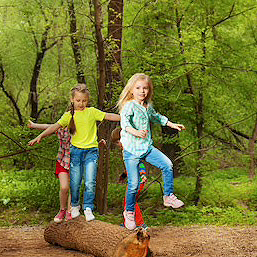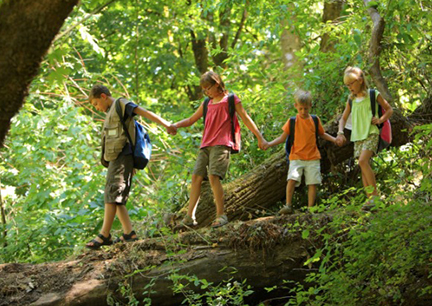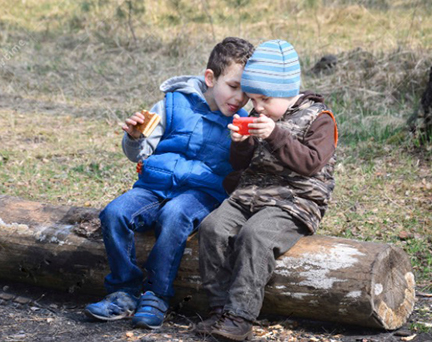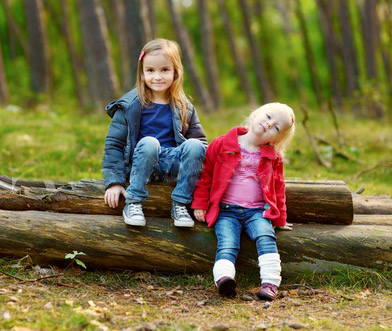Sitting Logs are wonderful assets on natural playgrounds.
Rarely does a child get to see a tree up close, so here they get to feel the texture of the bark, see branch structure, investigate growth rings, sit on various parts of the tree, and appreciate one of nature's most beautiful creations.
These Sitting Logs are unbelievably versatile play elements and should definitely be part of your basic play inventory. Sitting logs, or "fallen trees" can have many uses. They can be used for many activities, including balancing, so if you're looking for a discovery-oriented activity, let the children explore the Real log!
Also, if you want to create an amphitheater or outdoor classroom where kids/adults can meet around a stage or meeting area, get several and line ‘em up in a semicircle!
We carefully trim branches to make these real logs are safe, and we round trunk and branch ends so they're not dangerous. Although these logs are on the ground (ground-based play!) and therefore don't need fall zones, there may occasionally be an unusual circumstance where a fall zone may be necessary.
We also provide the option of peeling and treating the logs for longevity.
Sitting Logs are designed to sit on top of the ground or be partially buried in the ground, and are typically greater than 12" diameter. The trees are of enough weight that when partially buried, they won't roll or move around the site.
A NOTE about the next life of this log: These logs were once part of real, live trees cut during a thinning operation designed to give more room so other tree could grow faster.
Because these logs are no longer alive, they are now subject to the slow and wonderful process of natural decomposition, which is characterized by the arrival of a particular sequence of harmless insect and fungus species. These help the wood to decompose, thus serving as a “savings account” of nutrients and organic material for the forest soil.
Wood may take decades to decay completely, during which time the community structure of insects and fungi change as members undergo complex interactions with each other.
The first species to colonize a newly dead are beetles that feed on the nutrient-rich phloem and fungi that colonize broken or cut stems or scars in the bark.
Use this opportunity to teach your children about the benefits of decomposition and how beautifully nature takes care of itself!
NOTE that we can drill holes in each end and give you rebar to drive down through so the log can be “fixed” to the ground.





